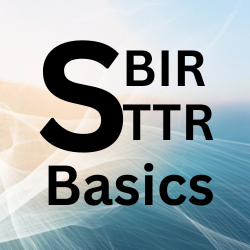Small businesses must ensure correct invoicing and labor cost reporting when navigating the SBIR program. The federal government provides grants and contracts to support R&D. Invoicing these costs can be confusing, especially for direct labor. Direct labor costs are wages for employees working on the project and may differ from the proposed amounts.
So, how do businesses navigate the invoicing of actual versus proposed direct labor costs under the SBIR program? Let’s break it down.
The Difference Between Actual and Proposed Direct Labor Costs
Proposed Direct Labor Costs: These are the labor costs a small business estimates in its SBIR proposal. The business outlines the project work scope and proposed labor hours and sets the planned wage rates for employees working on the project. Proposed costs are included in the budget submitted to the funding agency and are used to justify the requested funds.
However, the budget’s proposed labor rates should reflect anticipated wages and rates incurred during the project. The proposed rates should not exceed any salary caps established by the government. The allowable salary cap amount isn’t the default rate for the budget. Small businesses must understand that the cap limits the amount they can charge. It is not the rate used for a proposal. This distinction is a significant difference that many applicants overlook.
So, the business labor rates outlined in the proposal must reflect the planned employees’ salaries during the project. Furthermore, the labor rates align with the business’s typical compensation structure, reflect reasonable levels, and follow any specific guidance the funding agency sets.
Correct Invoicing Steps: Direct Labor Costs Under SBIR
When a small business invoices for reimbursement under an SBIR contract or grant, it is essential to accurately report the actual direct labor costs incurred, even though the proposed costs may differ. The invoicing process typically follows these steps:
- Establish the Direct Labor Rates: Before generating the invoice, the agreed project labor rates should be reviewed and compared to actual payroll rates. This review identifies actions needed to modify actual costs (like applying the salary cap).
- Track Actual Labor Costs: As the project progresses, the small business must track the actual hours employees work and the actual wages paid. For this, accurate timekeeping (in a system that meets timekeeping requirements) and documentation of employee pay (from the payroll system) are crucial. Ideally, a timekeeping system with project, labor type, and other cost segregation requirements is in place and integrates with the accounting system.
- Reconcile Actual Costs with Proposed Costs: The small business compares actual labor costs to proposed costs when invoicing to identify any discrepancies. It’s common to encounter some variance between proposed and actual labor costs to bill due to factors such as:
- Changes in staffing or hourly rates
- Adjustments in the number of hours worked by personnel
- Variances in indirect costs (fringe benefits, overhead, and administration)
- Unanticipated project delays or accelerations
- Justify Variances: If there is a significant variance between the proposed and actual labor costs, the small business must be able to justify the difference to the contracting agency. Agencies generally expect that such discrepancies are explained and supported by clear documentation, such as updated work schedules or revised labor rates due to unforeseen circumstances.
Key Considerations for Correct Invoicing of Labor
- Compliance with Budgetary Constraints: SBIR contracts and grants often have specific budgetary constraints that must be adhered to. While minor variances are acceptable, excessive deviations may raise concerns about the management of funds. The business must ensure that direct labor costs are reasonable, necessary, and adequately justified.
- Labor Rate Documentation: It’s crucial to provide supporting documentation for the labor rates invoiced, especially if the business needs to adjust the rates from the original proposal. For example, if an employee’s rate changes or if a different employee works more hours than initially planned, the business must be able to document these changes.
- Fringe Benefits and Other Costs: In addition to direct labor rates, businesses must account for fringe benefits (such as payroll taxes, paid time off, health insurance, retirement contributions, etc.) and any indirect costs related to labor. These rates should match those proposed unless there is a significant and documented change.
- Government Review and Approval: When invoicing for direct labor costs, the contracting officer or the agency reviewing the project will assess whether the amounts are reasonable. They will also determine if the costs comply with the contract’s or grant’s terms. If discrepancies between actual and proposed costs arise, they may require supporting documentation or clarification.
Conclusion: Transparency and Documentation Are Key to Correct Invoicing
Invoicing actual direct labor costs under the SBIR program requires accuracy, documentation, and transparency. Variations must be justified.
Small businesses should maintain careful records of labor hours, pay rates, and any adjustments made during the project. Clear communication with the funding agency is crucial to handling discrepancies appropriately. This approach helps businesses prevent payment delays and maintain a strong relationship with the funding agency throughout the R&D project.
References:
- National Institutes of Health (NIH). (2020). SBIR/STTR Policies and Guidelines. Retrieved from https://sbir.nih.gov/
- U.S. Small Business Administration (SBA). (2021). Financing Options for Small Businesses. Retrieved from https://www.sba.gov/funding-programs

